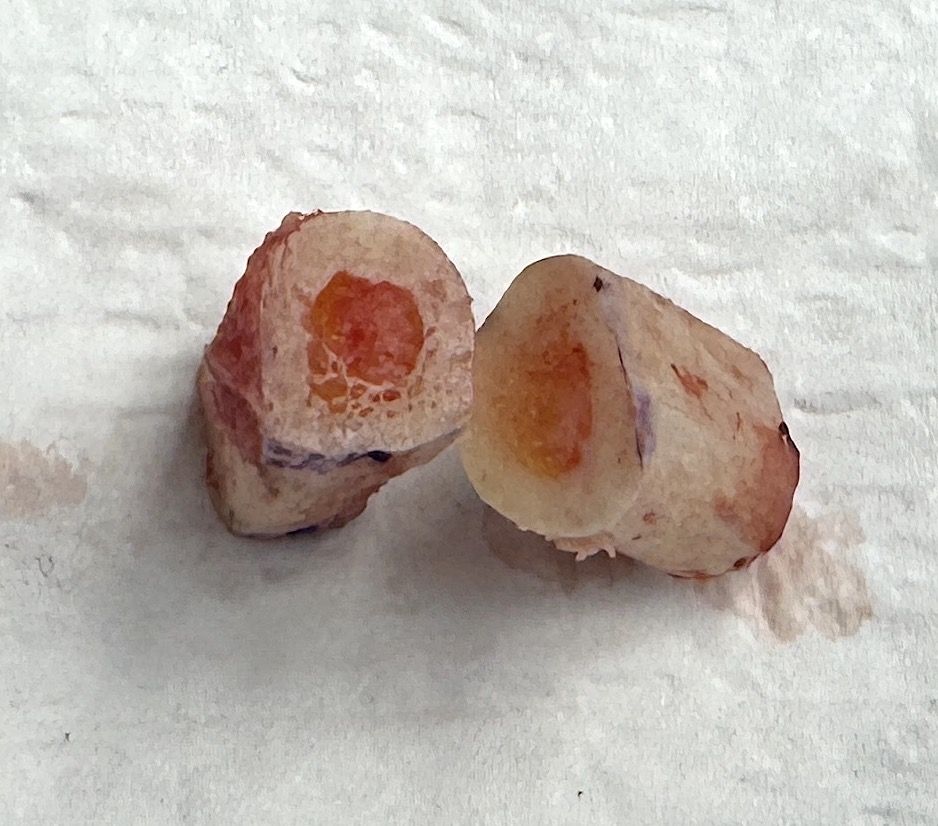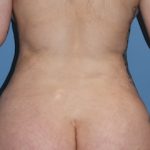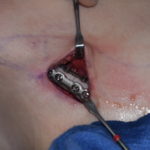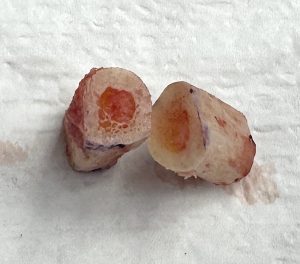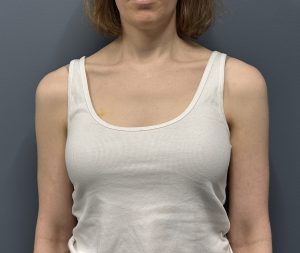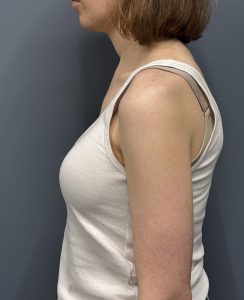Background: The obvious part of shoulder narrowing surgery is that a segment of the clavicle bone is removed. What is not obvious is how different the shape and size of the clavicle bone can be not only between patients but also between the two sides of each patient. While it is natural to assume that the clavicle is a homogeneous bone with few differences in its anatomic shape after hundreds of clavicle reduction osteotomies I am consistently impressed with its variability.
According to anatomic studies the clavicle has the Jost variability in shape of any long bone. This is felt to occur because of its long skeletal growth period where it is subjected to mechanical loading forces which alter its shape. It is particularly affected by the dominant hand side of the patient where greater stress loading occurs on that side as opposed to the non-dominant side. Since many patients are right handed the clavicle bone shape on that side is more curved, thicker in cross-dimension and a bit shorter in length than the opposite left side. Thus clavicle asymmetry is the norm. Interestedly these differences between the two sides is more pronounced in men than in women.
The relevance of these anatomic studies is that in clavicle reduction surgery they will become not only obvious but also affects how the fixation plates are applied. As a result the position of the plates on the bone are usually different on both sides. This does not affect the outcome of the surgery but will affect the ease or difficulty of successful hardware application.
Case Study: This female desired shoulder reduction with a bideltoid distance of 49.5cms. Like all should reduction surgeries the goal is not only to reduce the width but to desquare its shape.
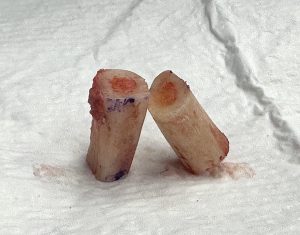


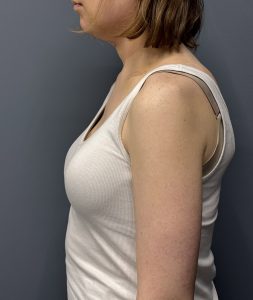
Clavicle reduction is a technically challenging procedure as it is performed through very small incisions. One unique feature of doing the surgery is the position of the head which can be ‘in the way’ when applying the fixation plate and screws due to the very medial location of the incision at the base of the neck. Based on the position of the superior plate on the bone the head can be more in the way which requires making a significant tilt to the head to drill all the screw holes in the inner half of the plate.
Key Points
1) The limits of bone removal in shoulder narrowing surgery is the pull in of the curved proximal and distal ends
2) The typical length of bone removed is 2.5cms per side which consistently allows for a very visible change in shoulder width and shape.
3) Clavicles differ greatly run shape and size amongst patients which affects how the fixation is applied on each side.
Dr. Barry Eppley
World-Renowned Plastic Surgeon

